Canis Major is a constellation located in the southern celestial hemisphere. Its name is Latin for “Greater Dog” in contrast to Canis Minor the “Lesser Dog”.
Key Facts & Summary
- Canis Major is the 43rd largest constellation in the sky, among the 88 modern constellations.
- Canis Major spreads out for over 380 square degrees.
- It is part of the 48 Greek constellations first listed by astronomer Ptolemy In the 2nd century.
- Canis Major and Canis Minor are depicted as celestial hunting dogs following the constellation of Orion, the celestial hunter.
- The Milky Way passes through Canis Major, and as such, several open clusters lie within its borders.
- There is only one Messier object in Canis Major, namely Messier 41, an open cluster.
- The brightest star in Canis Major is Sirius, which is also the brightest star in the night sky, having an apparent magnitude of -1.46. It is known as the “dog star”.
- Currently, seven stars that host planets have been discovered in Canis Major.
- Canis Major contains many interesting stars such as Adhara, the second-brightest star in the constellation, and the brightest source of extreme ultraviolet radiation. There is also the yellow-white supergiant Wezen, the blue-white giant Mirzam, the blue-white supergiants Aludra and Omicron2, the binary star Furud, the neutron star RX J0720.4-3125, and the red hypergiant VY Canis Majoris, which is among the largest stars known.
- The constellation of Canis Major contains several interesting deep-sky objects as well, such as the Canis Major Dwarf Galaxy, the emission nebula NGC 2359 – also known as Thor’s Helmet, or the colliding spiral galaxies NGC 2207 and IC 2163.
- There are no meteor showers associated with the Canis Major constellation.
The constellation of Canis Major was known to the ancients. In ancient Mesopotamia, the brightest star of the constellation, Sirius, was named KAK.SI.DI by the Babylonians.
It was viewed as an arrow aiming towards Orion, while the southern stars of Canis Major and a part of Puppis, were seen as a bow, named BAN in the Three Stars Each tablet, dating around 1100 BC.

In Greek mythology, Canis Major represented the dog Laelaps, a gift from Zeus to Europa, or sometimes the hound of Procris, Diana’s nymph, or the one given by Aurora to Cephalus, so famed for its speed that Zeus elevated it to the sky.
The constellation was also considered to represent one of Orion’s hunting dogs, pursuing Lepus, the celestial Hare, or helping Orion fight Taurus, the celestial bull, and it is referred to in this way by Aratos, Homer, and Hesiod.

The Greeks referred to only one dog, however, during the Roman times, Canis Minor appears as Orion’s second celestial hunting dog. Alternative names include Canis Sequens and Canis Alter. Canis Syrius was the name used in the 1521 Alfonsine tables.
Location
The constellation of Canis Major is the 43rd largest constellation in the sky. Canis Major spreads out for over 380 square degrees. Canis Major is located in the second quadrant of the southern hemisphere (SQ2), and it can be seen at latitudes between +60o and -90o.
- Right Ascension: 06h 12.5m to 07h 2.5m
- Declination: -11.03o to -33.25o
- Visible: between +60o and -90o
- Best viewed: at 21:00 – 9 p.m. in February
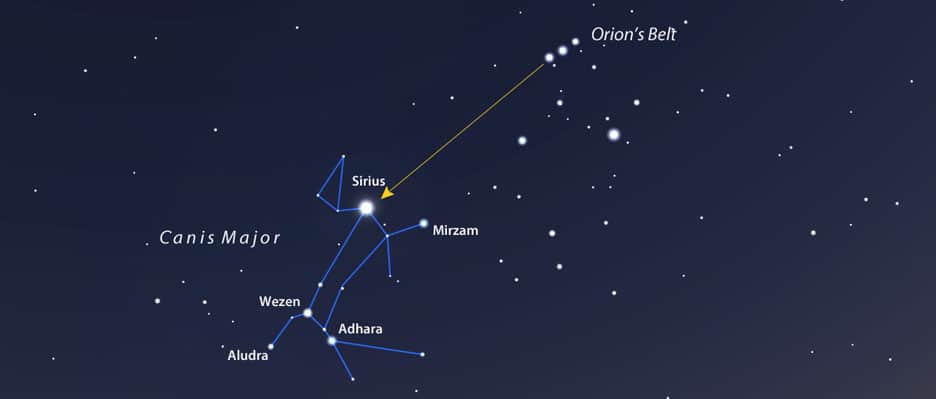
The constellation of Canis Major belongs to the Orion family of constellations, along with Canis Minor, Lepus, Monoceros, and Orion. The bordering constellations of Canis Major are Columba, Lepus, Monoceros, and Puppis.
Messier Objects
The constellation of Canis Major contains only one Messier object, the star cluster Messier 41.
Messier 41
Messier 41, also designated as NGC 2287, is an open cluster situated at 2,300 light-years away from Earth. Messier 41 has an apparent magnitude of 4.5.

This star cluster has an apparent dimension of 38 arcminutes, having between 25 to 26 light-years in diameter. Messier 41 contains over 100 stars, and it can be seen through small telescopes, being around four degrees south of Sirius, the brighter star in Canis Major.
Notable Stars
The constellation of Canis Major contains many bright stars above magnitude 2.0, however, Sirius, the brightest star in the night sky is also situated here, having an apparent magnitude of -1.47. Canis Major is also the home of VY Canis Majoris, one of the largest stars discovered.
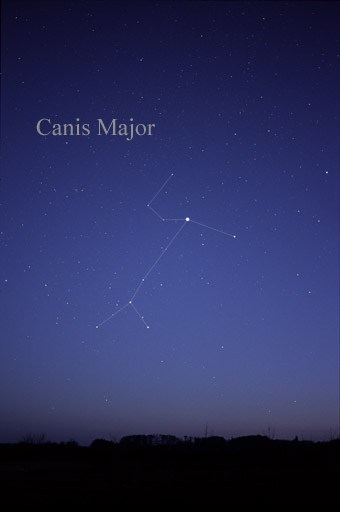
Sirius
Sirius, also designated as Alpha Canis Majoris, is the brightest star in Canis Major, and overall the brightest in the night sky. For comparison, Sirius is twice as bright as Canopus, the second-brightest star in the night sky.
Sirius isn’t, however, a single star, it is a binary star consisting of a main-sequence star of spectral type A0, termed Sirius A, and a faint white dwarf companion designated as Sirius B.

The distance between the two stars varies between 8.2 and 31.5 AU, and they complete one orbit around each other once every 50 years. The primary star, Sirius A, has 206% of the Sun’s mass, and 171% of its radius.
The Sirius star system is situated at around 8.6 light-years away from us, it is one of Earth’s nearest neighbors. Sirius is also known as the Dog Star, reflecting its prominence in its constellation – Canis Major – the celestial Greater Dog.
Adhara
Adhara, designated as Epsilon Canis Majoris, is a binary star located at around 430 light-years away from us. Adhara is the second-brightest star in the constellation, having an apparent magnitude of 1.50.
The Adhara star system is comprised out of two stars, a blue star designated as Epsilon Canis Majoris A, and B. The primary star, Adhara, is the brightest ultraviolet source in the sky.

It is the strongest source of photons capable of ionizing hydrogen atoms in interstellar gas near the Sun and is very important in determining the ionization state of the Local Interstellar Cloud.
Adhara is several times hotter than our Sun, having 1,200% of the Sun’s mass, and 1,300% of its radius. Adhara is 38,700 times brighter than the Sun.
Wezen
Wezen, also designated as Delta Canis Majoris, is a yellow-white F-type supergiant star, being the third brightest star in Canis Major. Wezen has an apparent magnitude of 1.824.

Since 1943, this star’s spectrum has served as one of the stable anchor points by which other stars are classified. Wezen lies around 10 degrees south southeast of Sirius.
Wezen has around 1,690% of the Sun’s mass, around 21,500% of its radius, and it is 82,000 times brighter. It will become a red supergiant star in the future. Wezen is situated at around 1,600 light-years away.
Mirzam
Mirzam, designated as Beta Canis Majoris, is the fourth brightest star in the constellation, having an apparent magnitude of 1.985. Mirzam is a blue-white giant star located at around 490 light-years away.
Mirzam is a Beta Cephei variable star that varies in magnitude between +1.97 and +2.01 over a six-hour period. Mirzam is 1,350% more massive than our Sun, having 970% of its radius, and it is also 26,600 times brighter.

Mirzam is located near the far end of the Local Bubble, a cavity in the local interstellar medium through which the Sun is also traveling.
Aludra
Aludra, designated as Eta Canis Majoris, is the fifth brightest star in the constellation, having an apparent magnitude of 2.450. Since 1943, this star’s spectrum has served as one of the stable anchor points by which other stars are classified.
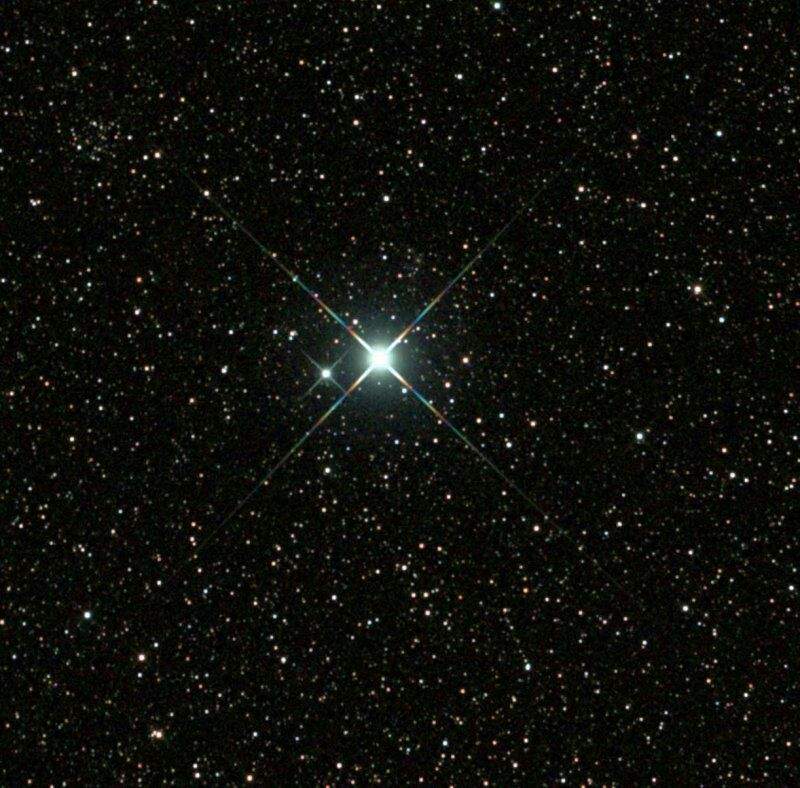
Aludra is a blue-white supergiant star, having 1,919% of our Sun’s mass, 5,630% of its radius, and being around 105,442 times brighter. Aludra is an Alpha Cygni variable star, its brightness varies from +2.38 to 2.48 over a period of 4.7 days. Aludra is located at around 2,000 light-years away.
Tau Canis Majoris
Tau Canis Majoris is a multiple star system located at around 5,000 light-years away. It is the brightest member of the open cluster NGC 2362, having an apparent magnitude of 4.40.

The primary star, Tau Canis Majoris, is 5,000% more massive than our Sun, having 1,980% its radius, and being 280,000 times brighter. Tau Canis Majoris has surface temperatures of around 32,000 K.
Furud
Furud, designated as Zeta Canis Majoris, is the sixth brightest star in the constellation, having an apparent magnitude of +3.025. Furud is a spectroscopic binary star.

The primary star is a main-sequence star, having 770% of our Sun’s mass, 390% of its radius, and it is 3,603 times brighter than our Sun. Furud has surface temperatures of around 18,700 K, it is located at 362 light-years.
Muliphein
Muliphein, designated as Gamma Canis Majoris, is a blue-white B-type bright giant star located at around 440 light-years away. Muliphein has an apparent magnitude of +4.10.

This star is a chemically peculiar Hg-Mg star having abnormal lines of magnesium and mercury in its spectrum. Muliphein is a member of the Collinder 121 open star cluster. It has around 560 % of our Sun’s radius, and it is more than twice as hot, having temperatures of 13,596 K.
Omicron1
Omicron1 Canis Majoris is a red supergiant star located at about 3,500 light-years away. It is an irregular variable star, varying between apparent magnitudes 3.78 and 3.99.
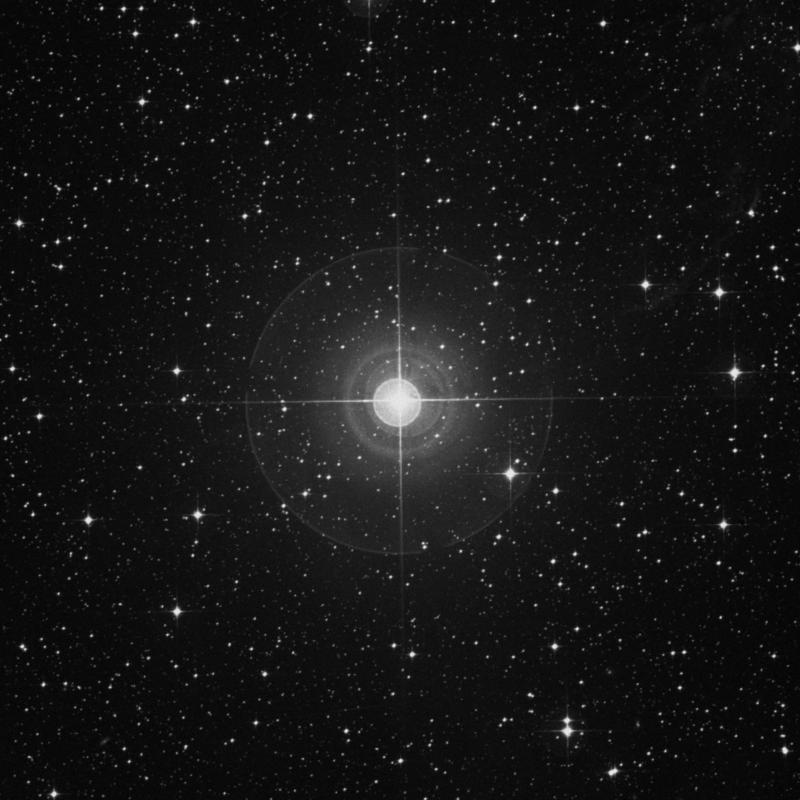
Omicron1 Canis Majoris is 16,000 times brighter than our Sun, having 783% of its mass, and a whopping 21,200% of its radius. This star is expected to explode as a type II supernova in the near future.
Omicron2
Omicron2 Canis Majoris is the seventh brightest star in the constellation of Canis Major, having an apparent magnitude of 3.043. Omicron2 is located at around 2,800 light-years away from us.

This star is 220,000 times brighter than our Sun, having 2,140% of its mass, and 6,500% of its radius. Omicron2 is classified as a massive supergiant of spectral type B3 la, appearing blue in color.
RX J0720.4-3125
RX J0720.4-3125 is a neutron star first discovered in 1997 in the ROSAT All-sky survey. This small star is located at around 1,200 light-years away.
RX J0720.4-3125 is part of the Magnificent Seven, a group of neutron stars that are relatively near to our Solar System.

RX J0720.4-3125 has an apparent magnitude of -26.6, its temperatures vary wildly for unknown reasons, and its radius has been estimated to be at just around 5 km / 3.1 mi.
VY Canis Majoris
VY Canis Majoris is a red hypergiant or supergiant located at around 3.900 light-years away. It is among the largest known stars ever discovered.
VY Canis Majoris has around 1.700% of our Sun’s mass and a whopping 142.000 % of its radius, to put that into perspective, it would take an object traveling with the speed of light around six hours to travel around the star’s circumference, while it would only take 14.5 seconds to encircle our Sun.

VY Canis Majoris is also among the brightest stars known to us, being around 270,000 times brighter than our Sun, yet with estimated surface temperatures cooler than our Sun, at around 3,490 K.
VY Canis Majoris has an apparent magnitude that varies from 6.5 to 9.6, and it is also a fast-spinning star having a rotational velocity of around 300 km / 186.4 mi per second.

This star is quite young, being only 8.2 million years old, however, it will not live for long. When VY Canis Majoris will reach the end of its life, it will explode as a hypernova, an event that is over 100 times stronger than a supernova.
Iota Canis Majoris
Iota Canis Majoris is a blue-white supergiant star located at around 3,100 light-years away. This star is also a variable, having a medium apparent magnitude of 4.40, which varies from 4.36 to 4.40.
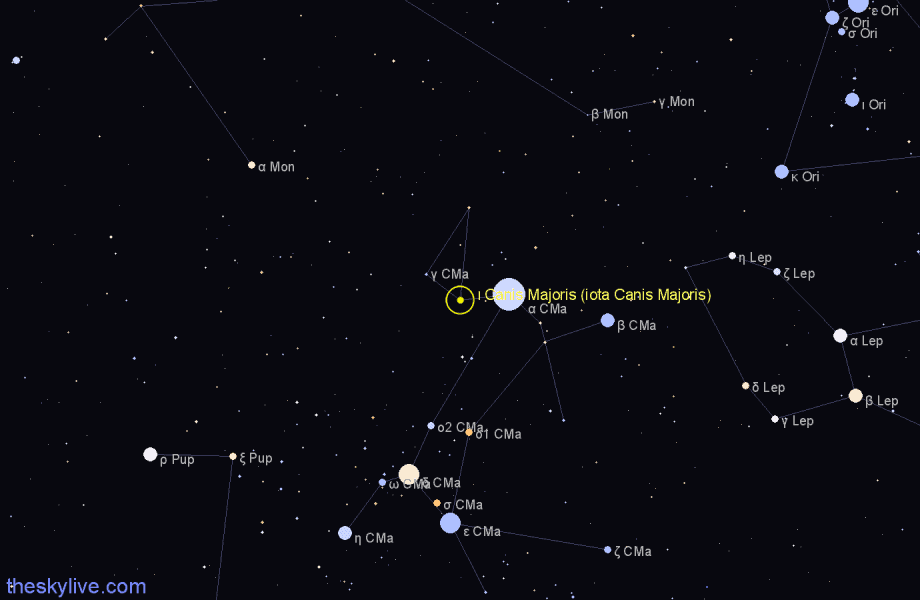
Iota Canis Majoris is 47,000 times brighter than our Sun, having 1,250% of its mass, and around 2,590% of its radius. It is also almost three times as hot, having surface temperatures of around 17,000 K.
W Canis Majoris
W Canis Majoris is a carbon star located at around 1,800 light-years away from us. This star has an apparent magnitude that varies slowly and irregularly from 6.35 to 7.90.

W Canis Majoris has carbon and s-process elements dredged up to the surface during thermal pulses of its helium-burning shell. This star is 3,560 times brighter than our Sun, having 23,400% of its radius, yet a very cool temperature, at only 2,900 K.
EZ Canis Majoris
EZ Canis Majoris is a binary star system located at around 4,900 light-years away. The primary star is a Wolf-Rayet type of star, being among the top ten brightest Wolf-Rayet stars.

EZ Canis Majoris has an apparent magnitude that varies from 6.71 to 6.95 over a period of 3.76 days. This Wolf-Rayet star has a bolometric luminosity 620,000 times greater than that of our Sun.
It is also several times hotter, having temperatures of around 89,100 K. EZ Canis Majoris has 2,300% of our Sun’s mass and 325% of its radius.
HD 56925
HD 56925, also designated as WR 7, is also a Wolf-Rayet star, located at around 17,000 light-years away from us. WR 7 lies at the center of a complex bubble of gas which is shocked and partially ionized by the star’s radiation and winds.
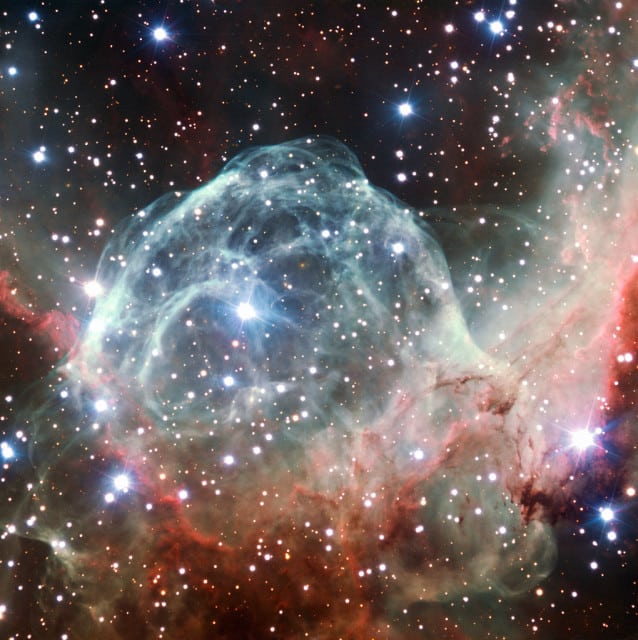
WR 7 is also exciting the ring nebula NGC 2359, also known as Thor’s Helmet. This star has an apparent magnitude of 11.4, being 229,000 times brighter than our Sun, and has around 1,300% of its mass, and 126% its radius.
WR 7 is 19.3 times hotter than our Sun, having temperatures of around 112,000 K.
Deep-sky Objects
The constellation of Canis Major contains several interesting deep-sky objects as well, such as the Canis Major Dwarf Galaxy, the open cluster Messier 41, the emission nebula NGC 2359 – also known as Thor’s Helmet, or the colliding spiral galaxies NGC 2207 and IC 2163.

NGC 2360
NGC 2360, also known as Caroline’s Cluster or Caldwell 58, is an open cluster located at around 3,700 light-years away from us. NGC 2360 has an apparent magnitude of 7.2, a diameter of around 15 light-years, and contains many red giant stars.

Caroline’s Cluster was discovered in 1783 by Caroline Herschel. Some speculate that this open cluster is around 2.2 billion years old.
NGC 2362
NGC 2362, also known as Caldwell 64, is a massive open cluster, having more than 500 solar masses. It has an apparent magnitude of 4.1 and a radius of around 11.2 light-years.
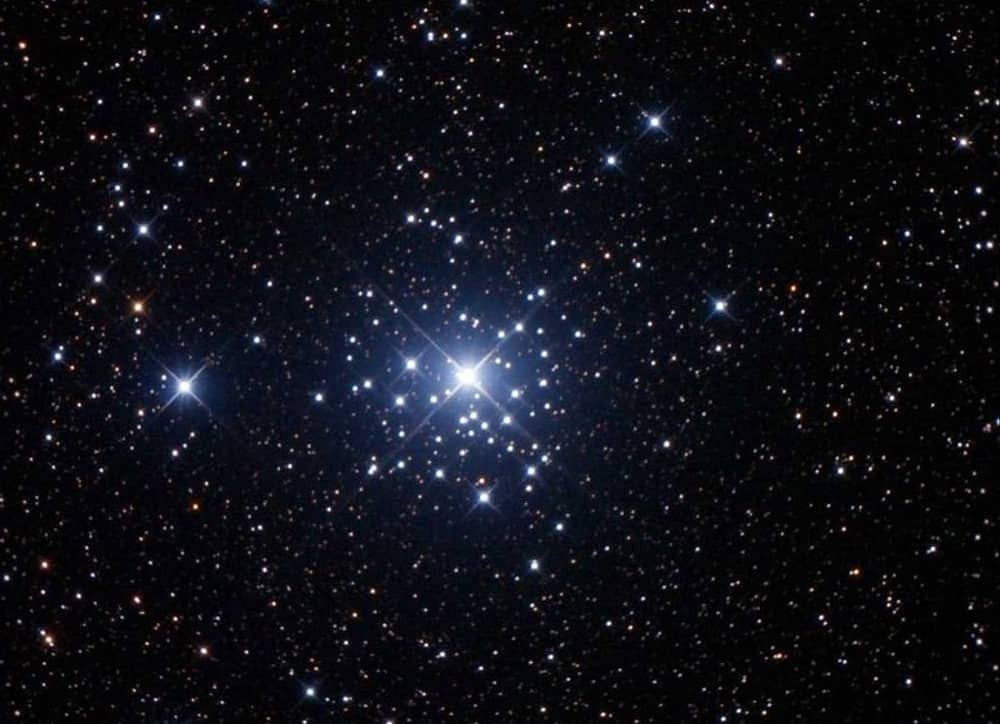
NGC 2362 is believed to have been discovered before 1654. The brightest star here is Tau Canis Majoris, and thus the whole cluster is sometimes referred to as the Tau Canis Majoris Cluster. The cluster is in relation with the giant nebula Sh2-310.
NGC 2354
NGC 2354 is a relatively fain open cluster that contains around 15 stars which are visible through binoculars. This cluster has an apparent magnitude of 6.5.

NGC 2359
NGC 2359, also known as Thor’s Helmet or the Duck Nebula, is an emission nebula situated at around 11,960 light-years away from us. This nebula isis 30 light-years in size.

NGC 2359 has a central Wolf-Rayet star, WR 7, that is extremely hot and illuminates the surrounding area. The nebula contains hundreds of solar masses of ionized material and unionized gas.
NGC 2207 & IC 2163
NGC 2207 and IC 2163 are a pair of colliding spiral galaxies that are located at around 80 million light-years away from us. The larger galaxy is NGC 2207, and it is classified as an intermediate spiral galaxy.

The other galaxy, IC 2163, is a barred spiral galaxy. They have an apparent magnitude of 12.2, and 11.6 respectively. The collision between these two galaxies is of great interest to astronomers since this event might reflect the probable fate of our Milky Way galaxy and the Andromeda galaxy.
Supernovae also appear to be quite common in NGC 2207, with four being observed since 1975.

Canis Major Dwarf Galaxy
The Canis Major Dwarf Galaxy, or Canis Major Overdensity, is the closest satellite galaxy of the Milky Way, to Earth. This disputed dwarf irregular galaxy is situated at around 25,000 light-years away from us.

The Canis Major Dwarf Galaxy is estimated to contain 1 billion stars, many of which are red giants. This galaxy is situated at around 42,000 light-years away from the Galactic Center.
Did you know?
- In Chinese astronomy, the constellation of Canis Major is located in the Vermilion Bird.
- The Maori and Tuamotus people recognized the figure of Canis Major as a distinct entity.
- It is believed that the character Sirius, in the Harry Potter series, who can transform into a dog, might have been inspired by Canis Major’s brightest star.
- The rising of Sirius marked the flooding of the Nile in Ancient Egypt.
Sources:
Image Sources:
- https://www.thoughtco.com/thmb/opX5lqz30agaRn3I1iyIobw6sVA=/768x0/filters:no_upscale():max_bytes(150000):strip_icc()/sirius-and-procyon-5851b5b25f9b586e02633123.jpg
- https://upload.wikimedia.org/wikipedia/en/thumb/8/89/Canis_Major_on_the_Manuchihr_Globe.jpg/640px-Canis_Major_on_the_Manuchihr_Globe.jpg
- https://i1.wp.com/astrobob.areavoices.com/files/2020/03/Canis-Major-finder-March_FEA.jpg?fit=936%2C399
- https://upload.wikimedia.org/wikipedia/commons/thumb/c/c1/Messier_041_2MASS.jpg/574px-Messier_041_2MASS.jpg
- https://upload.wikimedia.org/wikipedia/commons/c/c7/CanisMajorCC.jpg
- https://upload.wikimedia.org/wikipedia/commons/thumb/c/c9/Sirius_A_and_B_artwork.jpg/640px-Sirius_A_and_B_artwork.jpg
- https://nineplanets.org/wp-content/uploads/2020/01/Adhara-1024x506.jpg
- https://www.star-facts.com/wp-content/uploads/2020/07/Wezen.jpg?189db0&189db0
- https://www.star-facts.com/wp-content/uploads/2020/07/Mirzam.jpg?189db0&189db0
- https://pm1.narvii.com/6423/ce86c1657715ab0e5cdaca4cc97845daaab58cad_hq.jpg
- https://sunnymeade.files.wordpress.com/2011/12/ngc-2362-650.jpg
- https://theskylive.com/sky/stars/finder-charts/furud-zeta-canis-majoris-finder-chart.png?c=1586786672
- https://www.davidmalin.com/fujii/image/CMa_www.jpg
- https://theskylive.com/sky/stars/star-images/25/2580_800.jpg
- https://www.constellation-guide.com/wp-content/uploads/2011/03/Tau-Canis-Majoris-Cluster-NGC-2362-Caldwell-64.jpg
- https://astronomy.com/~/media/5600BB6F360F469890093E7D8607560F.jpg
- https://www.universetoday.com/wp-content/uploads/2008/04/vycanis-1280x720.png
- https://i.ytimg.com/vi/XU0iPq_7r_E/hqdefault.jpg
- https://theskylive.com/sky/stars/finder-charts/iota-canis-majoris-finder-chart.png?c=1586732293
- https://qph.fs.quoracdn.net/main-qimg-059fd1b7c0713677f548c5c242a77b31
- https://www.syfy.com/sites/syfy/files/styles/1170xauto/public/wire/legacy/apo_sh2308_bubble_haoiii.jpg
- https://www.constellation-guide.com/wp-content/uploads/2015/02/NGC-2359-638x640.jpg
- https://upload.wikimedia.org/wikipedia/commons/2/2f/NGC_2359%2C_Thor%27s_Helmet_%28core%29.jpg
- https://upload.wikimedia.org/wikipedia/commons/b/b3/NGC2360_-_SDSS_DR14_%28panorama%29.jpg
- https://www.jwinman.com/starcharts/images/NGC%202362.jpg
- https://upload.wikimedia.org/wikipedia/commons/8/8b/NGC_2354.png
- https://live.staticflickr.com/65535/48108182927_e146c5ef1f_b.jpg
- https://live.staticflickr.com/8652/16002621745_5f7f071b5e_b.jpg
- https://upload.wikimedia.org/wikipedia/commons/3/33/NGC2207%2BIC2163.jpg
- https://www.sciencemag.org/sites/default/files/styles/article_main_large/public/images/2003110721.jpg?itok=vsVqTEw2
